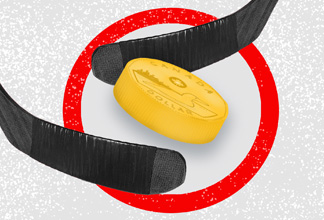Mergers and Acquisitions: Investing in Luxury
Written by Rita Silvan | Published on October 18, 2018
Written by Rita Silvan | Published on October 18, 2018
High fashion is flying high with the latest mega-deal: a whopping $2.12-billion price tag (all figures in U.S. dollars) for Italian luxury brand Versace. American conglomerate Michael Kors, having already bought London-based shoe brand Jimmy Choo in 2017 for $1.2 billion, has added another label known for its jet-set sizzle and red-carpet appeal. The acquisition is the latest in an industry where smaller, well-known — but underperforming — fashion brands with global potential are being snapped up.
Versace was founded in 1978 by Gianni Versace, and his high-octane, brightly coloured, slinky dresses defined the over-the-top style of the '80s and early '90s. After his assassination in 1997, his sister Donatella became artistic director, but the brand struggled to regain its mojo and financial momentum, running losses until 2011. In 2014, private equity firm Blackstone invested $280 million for a 20-per-cent stake in order to help Versace fund overseas expansion.
Many smaller companies have already been sold off to larger firms, so it will be interesting to see if the merger-and-acquisition trend in the luxury fashion sector still has legs. For investors, here are some interesting details about the industry to keep in mind:
Versace's shimmery cocktail dresses may work best in smaller sizes, but when it comes to the business of fashion, bigger is always better. Last year Versace posted a paltry profit of $18 million; the previous year it lost $8.7 million. In the high-stakes gamble of fashion retailing, conglomerates have many advantages. The nature of fashion is fickle — the popularity of different brands can fluctuate wildly from year to year depending on style trends and tourist traffic flows. Large conglomerates such as France's LVMH, which has 70 luxury brands on its roster including Louis Vuitton, always have a few strong performers to offset weaker brands. Large firms are also in a stronger position to negotiate with suppliers, landlords and advertising sales reps. Acquiring Versace gives Michael Kors the opportunity to better compete with its European rivals.
European brands rule luxury. According to the most recent report of The Lyst Index, a quarterly ranking of fashion's hottest brands, most of the top 10 were based in Europe. (Versace was number seven thanks to the buzz around its sponsorship of the Heavenly Bodies exhibition at The Costume Institute at The Metropolitan Museum of Art in New York, as well as the TV mini-series based on Gianni Versace's murder in Miami.) While European brands have a long history of producing luxurious goods, American companies may have the business edge when it comes to extracting monetary value.
According to Bain, a global management consultancy, the personal luxury goods market is expected to grow six to eight per cent in 2018 and reach over $400 billion in annual sales by 2025, largely driven by growing demand from China. Who knows what this could mean for those remaining independent luxury brands.
Fun Fact: It's fitting that Michael Kors will be renamed Capri Holdings after the deal is complete. It's a glamorous, jet-set destination with steep cliffs that offer a breathtaking view of the sea — plus, one of the company's current perfumes is called Island Capri.
RBC Direct Investing Inc. and Royal Bank of Canada are separate corporate entities which are affiliated. RBC Direct Investing Inc. is a wholly owned subsidiary of Royal Bank of Canada and is a Member of the Canadian Investment Regulatory Organization and the Canadian Investor Protection Fund. Royal Bank of Canada and certain of its issuers are related to RBC Direct Investing Inc. RBC Direct Investing Inc. does not provide investment advice or recommendations regarding the purchase or sale of any securities. Investors are responsible for their own investment decisions. RBC Direct Investing is a business name used by RBC Direct Investing Inc. ® / ™ Trademark(s) of Royal Bank of Canada. RBC and Royal Bank are registered trademarks of Royal Bank of Canada. Used under licence.
© Royal Bank of Canada 2025.
Any information, opinions or views provided in this document, including hyperlinks to the RBC Direct Investing Inc. website or the websites of its affiliates or third parties, are for your general information only, and are not intended to provide legal, investment, financial, accounting, tax or other professional advice. While information presented is believed to be factual and current, its accuracy is not guaranteed and it should not be regarded as a complete analysis of the subjects discussed. All expressions of opinion reflect the judgment of the author(s) as of the date of publication and are subject to change. No endorsement of any third parties or their advice, opinions, information, products or services is expressly given or implied by RBC Direct Investing Inc. or its affiliates. You should consult with your advisor before taking any action based upon the information contained in this document.
Furthermore, the products, services and securities referred to in this publication are only available in Canada and other jurisdictions where they may be legally offered for sale. Information available on the RBC Direct Investing website is intended for access by residents of Canada only, and should not be accessed from any jurisdiction outside Canada.

What you should know before buying into a dividend-paying business

How your brain processes the stress of market swings – and what that means for your investing decisions

How the best hockey players get to the top of their game and how this can help investors